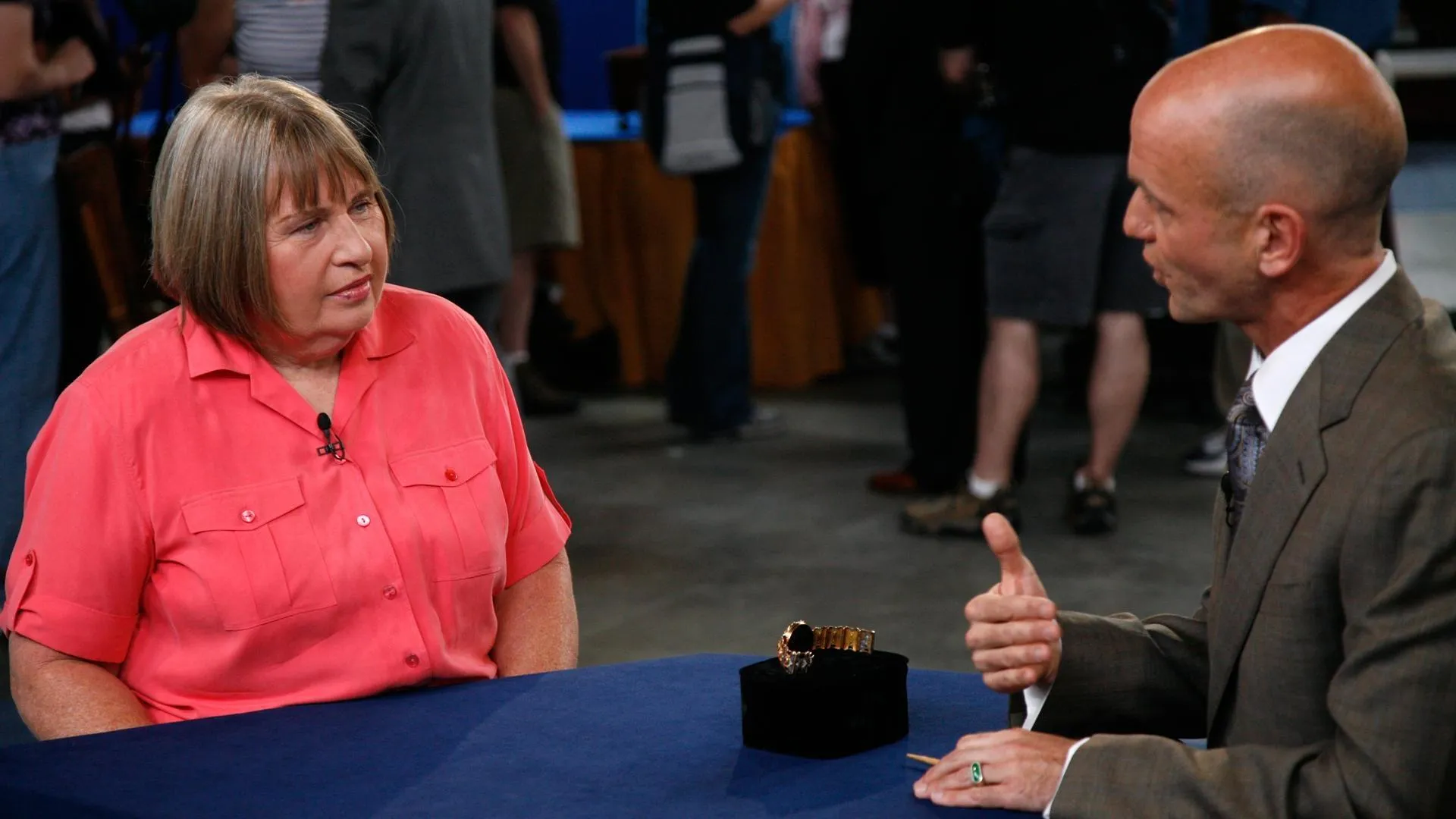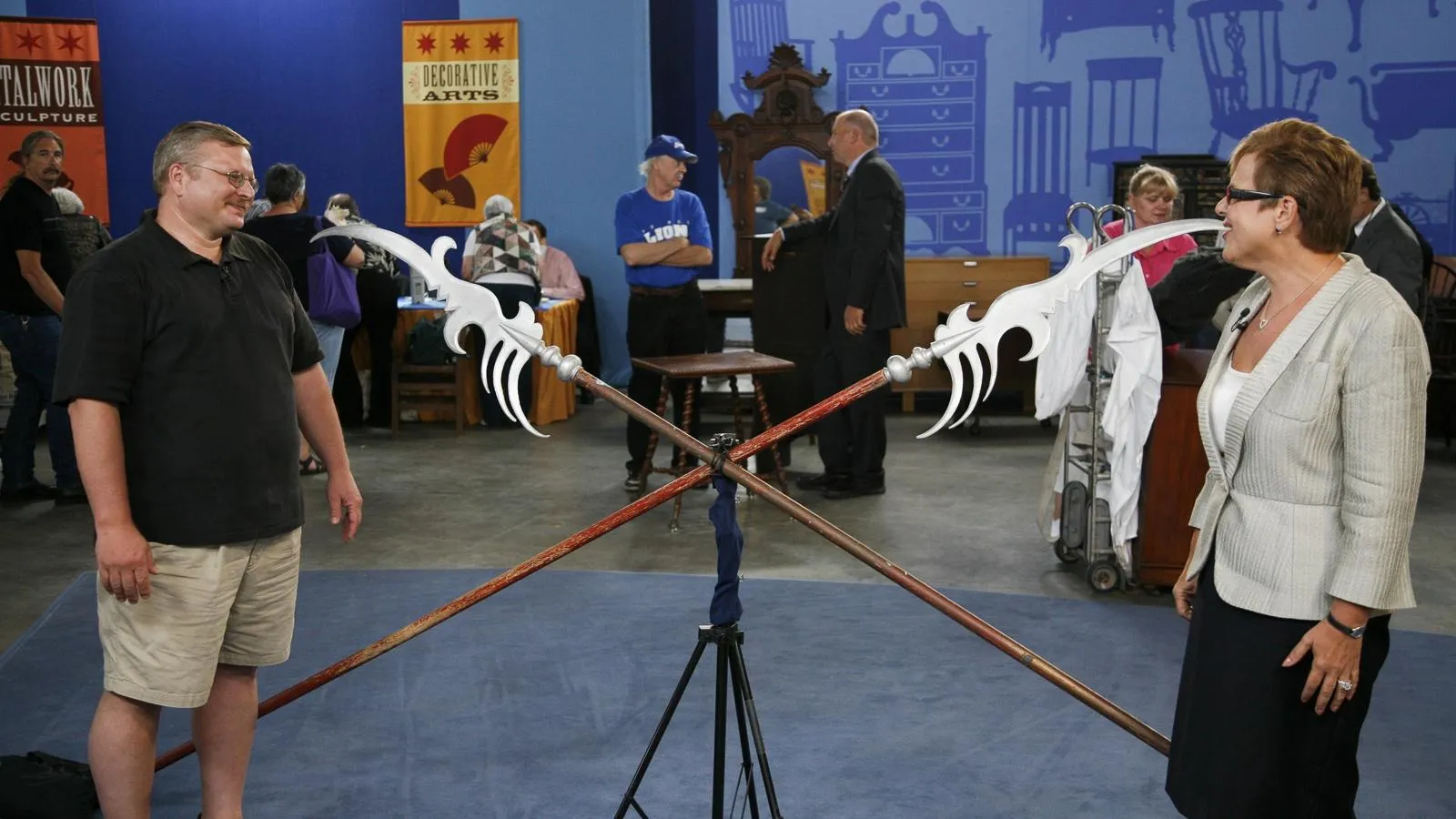GUEST: We've got an old fountain that we found in, uh, Battle Creek, Michigan, at an auction...
APPRAISER: Uh-huh.
GUEST: ...about 20 years ago. And, uh, we liked it, we bought it, and as we were leaving the auction, the people were just laughing at us that we paid so much for this thing that they had no idea what it was.
APPRAISER: What it was-- what'd you pay for it?
GUEST: We paid $325 for it.
APPRAISER: This is almost a scientific instrument at the glass table. This was made by Tufts, in Boston, and it's dated 1884.
GUEST: Okay.
APPRAISER: And it's cranberry glass, and it's, it's an amazing item.
GUEST: Right.
APPRAISER: Can you tell us how it works?
GUEST: Well, what happens, it's like an hourglass. You fill the top tray up with water, you fill the bottom piece with water, and then you flip it over. And so when the water's up here on the top, it displaces itself, and then it shoots water in the air. When it drains down, it lasts about 20 minutes. You flip it around the other way, and it lasts another 20 minutes.
APPRAISER: Well, it's a wonderful machine, and we're getting a little bath here. And I think because of the interest in science and technology today, because of the interest in cranberry glass...
GUEST: Yeah.
APPRAISER: ...I would say it's a $3,000 item.
GUEST: Really, wow, so…
APPRAISER: Thank you for bringing it.
GUEST: Thank you.













